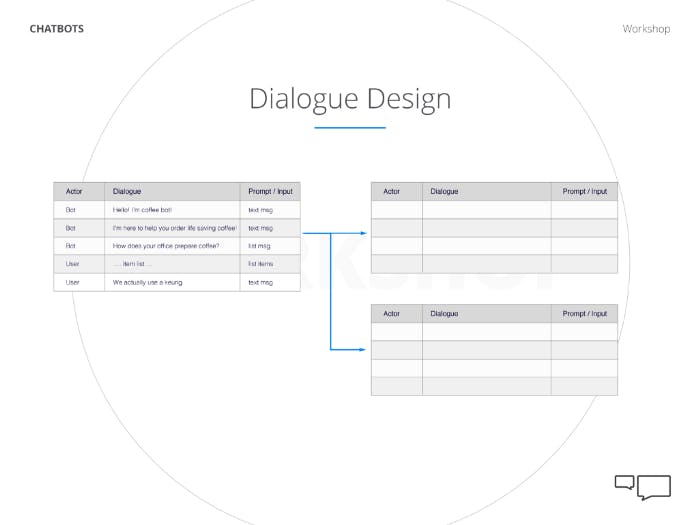How To Make a Chatbot

Here at Modus, our fearless team cultivates our collective curiosity every single day. But sometimes we yearn for even more chances to unleash the wildest ideas we have — to immerse ourselves in emerging technologies that might be outside of our comfort zones. Enter: Modus Make-a-thons, quarterly events that take place at our NYC offices. Get the low-down on what we’re up to in our make-a-thon blog series. Ready for your mind to be blown?
This month, we dipped our toes into the wonderful world of AI and made our very own chatbots. After tackling a brief master class in chatbot-building skills, the teams were off!
Here’s a preview of each team’s creation:
- James Bot: A dinner invitation from James Bond
- Festival Bot: A portable guide to music festivals
- Penny Fairshare: An easy way to split travel expenses
- Burn Bot: A clever comeback engine
- Lady Liberty Tours: A tour guide for NYC
- Personal Auctioneer: A digital way to watch auctions and bid
- Medical Assistant: An easy way to find local care
- Shopaholic Bot: An assistant to clue you in on sales
And here’s how we did it.
Designing our chatbots
First we defined our problem statements and created user personas. These important steps laid the groundwork for the chatbot experiences, and allowed each team to get on the same page and fully understand what specific problem we were trying to solve, and for whom.
Then it was on to the ultimate imagination exercise: creating the bot’s persona and writing the script. Pro tip: Don’t minimize this step! The bot’s persona and communication style will define the personality of your chatbot — and humanizing the experience for users is one of the keys to building a successful chatbot. Here’s another tip: if you’ve got copywriters, content strategists, or UX writers, get them on your team!

At this point, we knew the problem we were solving and who we were solving it for, we had an idea of the chatbot’s personality, and we even had key parts of the conversation script written — so it was time to dive more deeply into mapping out the conversation flow. We used the below templates to map out the conversations. (If you’re feeling like you want to jump ahead, you can see how we actually built the conversations below.)


Building our chatbots
We used Motion.ai to create our chatbots, and it was incredibly easy, but unfortunately it was acquired by HubSpot and is no longer available. However, there are other tools out there that are just as good. Have fun with it and experiment!
Chatbot platforms:
- https://www.motion.ai/ (No longer available)
- https://chatfuel.com/
- https://mobilemonkey.com/
- https://botsify.com/
- https://manychat.com/
- http://www.converse.ai/#features
- https://qnamaker.ai/
Chatbot best practices
Script writing
- Ask questions to provoke specific answers, but don’t get carried away (it’s not an interrogation).
- Clarity and brevity are paramount, but don’t forget to delight users.
- Don’t waste the user’s time explaining the obvious.
Conversation mapping
- Simplify complex user flows into smaller, more manageable chunks.
- Avoid frequent topic switching to prevent incomplete information retrieval.
- Expect the unexpected, and design for it — linear or static conversations will break.
- GUI elements can really enhance the experience, but don’t rely on them (they’re often platform-specific).
Handling errors
- Things might break, despite your best efforts. Be prepare with a clever fallback strategy.
- If something goes wrong, explain what happened and avoid blaming the user.
- Create as many guard rails as you can without sacrificing dynamism.

